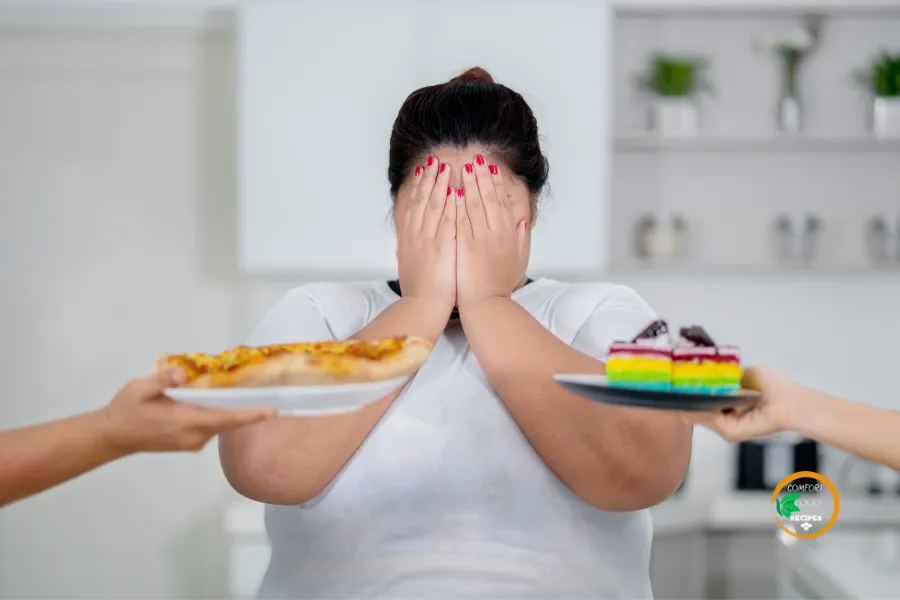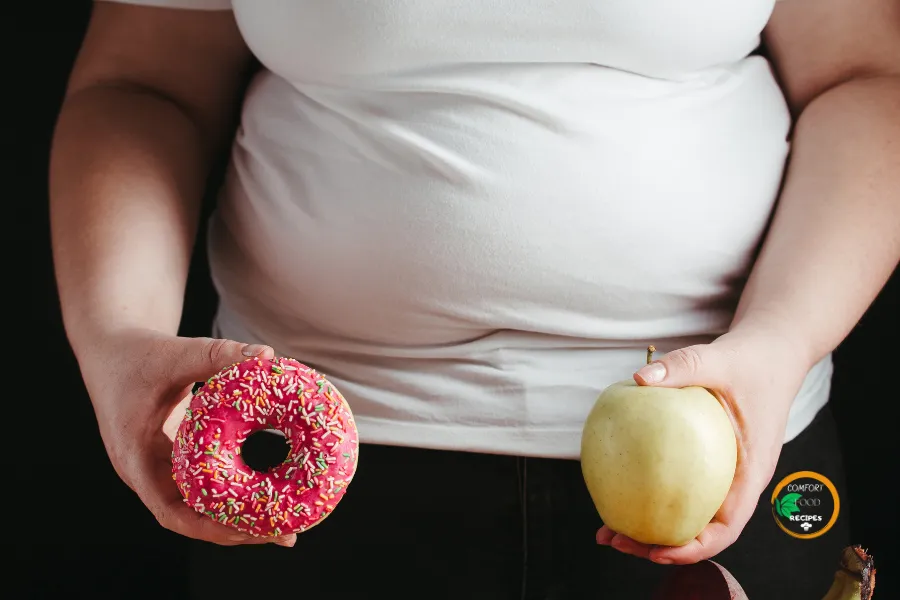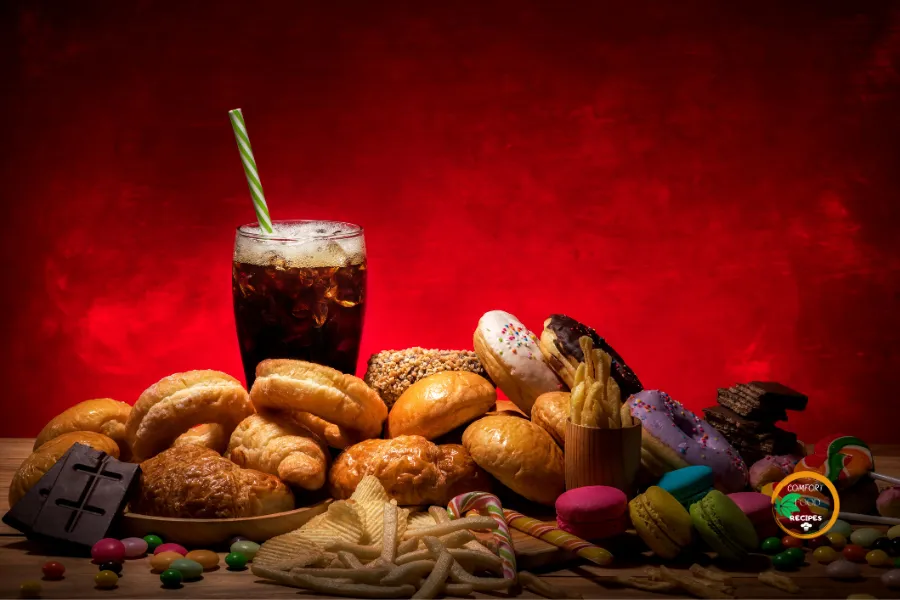Junk food. Just saying those two words probably brings up memories of late-night pizza runs, sneaky candy bars from the vending machine, or that irresistible bag of chips you demolished during a Netflix binge. It’s everywhere, it’s cheap, and let’s be real, it tastes so good. But there’s a catch. The more we reach for these quick fixes, the more we’re setting ourselves up for trouble down the road. So, what’s the deal with junk food? Why can’t we quit it, what’s it doing to our bodies, and how can we make smarter choices without feeling like we’re missing out? Let’s dig in, because I know you’ve been there, and I’ve got a lot to share.
What Exactly Is Junk Food?
When you hear “junk food,” you might picture a greasy burger or a neon-colored soda, but it’s way more than just fast food. Junk food is anything that’s super convenient, usually cheap, and ready to eat in seconds, think chips, candy, cookies, frozen pizzas, energy drinks, or those “grab-and-go” pastries at the gas station. These foods are packed with calories, sugar, salt, and unhealthy fats, but they skimp on the good stuff like vitamins, minerals, fiber, or protein. They’re often ultra-processed, meaning they’re loaded with additives to make them shelf-stable and crave-worthy.
Here’s a quick rundown of what falls into the junk food category:
- Fast food: Burgers, fries, hot dogs, fried chicken, anything you can get through a drive-thru in under five minutes.
- Snacks: Potato chips, pretzels, cheese puffs, or those little packs of gummies that disappear way too fast.
- Drinks: Sodas, energy drinks, sugary iced teas, or those “fruit” punches that are mostly just flavored sugar water.
- Desserts: Donuts, ice cream, cakes, or candy bars that seem to call your name at the checkout counter.
- Processed meals: Instant noodles, microwave dinners, or anything that’s more “heat and eat” than actual cooking.
What makes junk food “junk” isn’t just the ingredients, it’s the lack of balance. These foods are designed to give you a quick hit of energy, but they don’t keep you full or healthy. Ever scarf down a bag of chips and feel hungry again an hour later? That’s because junk food is like a flashy car with no gas, it looks good but doesn’t get you far.

Why Is Junk Food So Hard to Resist?
Let’s be honest: junk food isn’t just food; it’s a whole experience. It’s the go-to when you’re stressed, bored, or just don’t have time to cook. It’s cheap enough to grab on a budget, and it’s everywhere: gas stations, school cafeterias, office break rooms, you name it. But there’s more to it than convenience. Junk food is practically engineered to keep you coming back for more.
For one, it’s a flavor bomb. Scientists (yep, actual food scientists) mix sugar, fat, and salt in just the right ratios to light up your brain’s reward center. It’s like pressing a “feel good” button in your head. That’s why one bite of a chocolate bar or a sip of soda makes you want the whole thing. It’s not your fault, it’s biology! Our ancestors craved calorie-dense foods to survive, and junk food companies know exactly how to exploit that instinct.
Then there’s the marketing. Ever notice how ads for junk food are so fun? Bright colors, catchy jingles, and happy people chowing down like it’s a party. Kids get hooked early with toys in fast food meals or cartoon characters on cereal boxes. Teens fall for limited-edition flavors or influencers hyping up the latest energy drink. And adults? We’re not immune. Those “value menus” or “buy one, get one” deals make it feel like a steal, even if it’s costing us our health.
It’s also a cultural thing. Junk food isn’t just an American problem, it’s global. As fast food chains and snack brands spread to every corner of the world, traditional diets are taking a hit. In places like Japan or India, where rice, veggies, and fish used to rule, you’re now just as likely to see people grabbing burgers or chips. It’s not hard to see why, junk food is fast, and life is faster. When you’re juggling work, school, or family, who has time to cook a three-course meal?
But here’s the kicker: junk food can feel addictive. The more you eat it, the more you crave it. It’s like your taste buds get rewired to expect that intense hit of sweetness or saltiness. I’ve been there, reaching for a soda instead of water because it just feels more satisfying in the moment. The problem is, those moments add up.
The Real Cost: What Junk Food Does to Your Body
Okay, I’m not here to scare you, but we need to talk about what happens when junk food becomes a habit. It’s not just about fitting into your jeans, though, yeah, that’s part of it. Regularly eating junk food can mess with your body in ways that sneak up over time. Here’s the breakdown, and I promise to keep it real.
1. Weight Gain and Obesity
Junk food is calorie city. A single fast food meal can pack more calories than you need in a whole day, and those calories don’t come with much nutrition. Think about it: a large soda might have 300 calories, but it won’t fill you up like a 300-calorie bowl of veggies and chicken. Over time, those extra calories pile on as fat, and that’s a big reason why obesity rates are climbing worldwide.
Kids and teens are especially at risk because their bodies are still growing. A diet heavy in junk food can set them up for weight struggles that carry into adulthood. But adults aren’t off the hook, long commutes, desk jobs, and grabbing takeout on the way home make it easy to pack on pounds without realizing it.
2. Heart Problems
All that saturated fat and sodium in junk food is bad news for your heart. Fries, burgers, and processed snacks are loaded with fats that can clog your arteries over time, raising your risk of heart disease. The sodium in chips or instant noodles spikes your blood pressure, which puts extra strain on your ticker. I’ve seen friends cut back on fast food and feel better in weeks, less bloated, more energy. It’s not just an old-person problem; even young adults can start building up heart risks if they’re eating this stuff daily.
3. Type 2 Diabetes
Sugar is junk food’s best friend, and it’s not doing your blood sugar any favors. Sodas, candy, and desserts send your glucose levels on a rollercoaster, which over time can wear out your body’s ability to regulate sugar. That’s how type 2 diabetes creeps in, especially if you’re pairing junk food with a sedentary lifestyle. I had a coworker who swapped sugary drinks for water and said it was a game-changer for his energy and focus. Small changes can make a big difference.
4. Gut Trouble
Your gut is like a second brain, and junk food doesn’t treat it kindly. All that processed stuff can throw off the balance of good bacteria in your digestive system, leading to bloating, constipation, or even worse. A healthy gut needs fiber from fruits, veggies, and whole grains, stuff junk food usually lacks. Ever feel sluggish after a fast food binge? That’s your gut saying, “Help me out here!”
5. Mood and Mental Health
Here’s something you might not expect: junk food can mess with your head. Diets high in sugar and fat are linked to mood swings, anxiety, and even depression. It’s not just “feeling blah” after a sugar crash, over time, poor nutrition can affect your brain’s chemistry. I’ve noticed that when I eat cleaner, more fruits, less candy, I’m less stressed and more focused. It’s like my brain gets a tune-up.
6. Long-Term Risks
The scariest part? Junk food’s effects build up. Eating it regularly in your 20s might not feel like a big deal, but by your 30s or 40s, you could be dealing with chronic issues like high cholesterol, liver problems, or even a higher risk of certain cancers. It’s not about one burger, it’s about the pattern. And for kids, starting young can mean a lifetime of health battles.
Why It’s Tougher for Some People
Not everyone has the same relationship with junk food, and that’s worth talking about. For some, it’s just an occasional treat. For others, it’s a daily go-to, and there are reasons why. Low-income families often rely on cheap, calorie-dense foods because fresh produce or lean meats are pricier and harder to access. Busy parents might lean on fast food to feed their kids when time’s tight. And in some communities, there’s a corner store on every block but no grocery store for miles.
Then there’s the emotional side. Ever reach for ice cream after a rough day? Junk food can feel like a hug when life’s stressful, but it’s a temporary fix that doesn’t solve the root issue. Teens are especially vulnerable, school pressure, social media, and changing bodies make those sugary snacks feel like an escape. Understanding why we turn to junk food is the first step to finding better ways to cope.

Breaking the Cycle: Smarter Choices That Still Feel Good
Here’s the good news: you don’t have to give up tasty food to be healthy. It’s not about banning pizza forever, it’s about balance and making swaps that work for you. I’ve tried a bunch of these myself, and they’re easier than you think. Here’s how to start cutting back on junk food without feeling deprived.
1. Snack Smarter
Instead of chips or candy, try snacks that satisfy but don’t wreck your health:
- Popcorn: Air-popped with a sprinkle of seasoning is crunchy and low-calorie.
- Nuts: A small handful of almonds or peanuts keeps you full longer than a candy bar.
- Fruit: Apples, bananas, or berries are sweet and portable, nature’s candy!
- Veggies with dip: Carrot sticks with hummus or guacamole are surprisingly addictive.
Pro tip: Keep these in your bag or desk so you’re not tempted by the vending machine.
2. Rethink Drinks
Sugary drinks are a sneaky source of calories. Try these instead:
- Water with a twist: Add lemon, cucumber, or mint for flavor without sugar.
- Herbal tea: Iced or hot, it’s calming and zero-calorie.
- Sparkling water: Get that fizzy fix without the syrup.
- Homemade smoothies: Blend fruit and yogurt for a sweet treat that’s actually good for you.
I started carrying a reusable water bottle, and it’s crazy how much less I crave soda now.
3. Plan Quick Meals
Cooking doesn’t have to be a marathon. Prep simple stuff ahead of time:
- Sandwiches: Whole-grain bread, lean turkey, avocado, and veggies, done in five minutes.
- Salads: Toss greens, grilled chicken, and a light dressing in a container for work.
- Stir-fries: Frozen veggies and rice with a splash of soy sauce cook faster than takeout arrives.
- Oatmeal: Microwave it with fruit and nuts for a breakfast that beats sugary cereal.
I batch-cook on Sundays, nothing fancy, just enough to grab and go during the week. It saves money and keeps me from hitting the drive-thru.
4. Treat Yourself Right
You don’t have to swear off junk food completely. Love burgers? Make one at home with lean meat and a whole-grain bun. Craving ice cream? Have a small scoop, not a pint. The key is portion control and balance. If you’re eating mostly whole foods, fruits, veggies, lean proteins, you can enjoy a treat without guilt.
5. Shop Smarter
Grocery stores are junk food minefields, but you can outsmart them:
- Stick to the perimeter, produce, dairy, and meats are usually there.
- Make a list to avoid impulse buys.
- Don’t shop hungry (trust me, everything looks good then).
- Stock up on staples like rice, beans, and frozen veggies for cheap, healthy meals.
Beyond the Plate: The Bigger Picture
Junk food isn’t just a personal choice, it’s shaped by the world around us. Fast food chains and snack brands are global giants, pushing their products into every corner of the planet. In some countries, traditional meals like rice and beans or fresh fish are being edged out by burgers and sodas. Schools often have vending machines full of chips but no fruit stands. Workplaces offer free donuts but no salad bar. It’s like the system is set up to make junk food the default.
That’s why communities are fighting back. Some schools are swapping out soda machines for water fountains or teaching kids how to cook healthy meals. Cities are promoting farmers’ markets to make fresh food more accessible. And public health campaigns are spreading the word about what’s really in that “value meal”, not to shame anyone, but to empower us to make informed choices.
Social media’s a mixed bag. On one hand, influencers push energy drinks or fast food deals. On the other, you’ve got fitness buffs and home cooks sharing easy recipes or hacks to eat better. I’ve found tons of ideas just scrolling through Instagram, like blending frozen bananas for “ice cream” or making pizza with a cauliflower crust. It’s inspiring to see people get creative.
How to Make It Stick
Changing your eating habits isn’t about willpower, it’s about setting yourself up for success. Here are a few tricks I’ve learned:
- Start small: Swap one junk food habit at a time, like soda for water or chips for fruit.
- Find your why: Want more energy? Better sleep? Clearer skin? Keep that goal in mind.
- Get support: Tell a friend or family member you’re cutting back, they can cheer you on or join you.
- Track it: Write down what you eat for a week. It’s eye-opening to see how much junk sneaks in.
- Celebrate wins: Notice how good you feel after a healthy meal? That’s worth celebrating, not just the number on the scale.
I’ll admit, I still crave fries sometimes. But now I’ll bake some sweet potato wedges instead, and they hit the spot without the grease. It’s not about being perfect, it’s about feeling better more often.
Wrapping It Up: You’ve Got This
Junk food is a tough habit to shake because it’s so darn convenient, tasty, and everywhere you look. But the more you know about what it’s doing to your body, piling on pounds, stressing your heart, messing with your mood, the easier it is to say, “Maybe not today.” You don’t have to overhaul your life overnight. Start with one swap, one meal, one day. Grab an apple instead of a candy bar. Try a new recipe instead of ordering takeout. Your body will thank you, and you’ll still get to enjoy food that makes you happy.
At the end of the day, eating well isn’t about rules or deprivation, it’s about giving yourself the energy and health to live your best life. Whether you’re a busy parent, a stressed-out student, or just someone trying to feel better, you’ve got the power to make choices that work for you. So next time you’re tempted by that shiny fast food sign, pause and think: “What’s really worth it?” I bet you’ll find something better.
References:
Li, Y., Li, X., Zhang, T., Guo, H., and Sun, C. “How Do Perceived Health Threats Affect the Junk Food Eating Behavior and Consequent Obesity? Moderating Role of Product Knowledge Hiding.” (2022). ncbi.nlm.nih.gov
Sujan Bohara, S., Thapa, K., Datt Bhatt, L., Singh Dhami, S., and Wagle, S. “Determinants of Junk Food Consumption Among Adolescents in Pokhara Valley, Nepal.” (2021). ncbi.nlm.nih.gov
Davis, C. “Evolutionary and neuropsychological perspectives on addictive behaviors and addictive substances: relevance to the “food addiction” construct.” (2014). ncbi.nlm.nih.gov
M. Schulte, E., M. Avena, N., and N. Gearhardt, A. “Which Foods May Be Addictive? The Roles of Processing, Fat Content, and Glycemic Load.” (2015). ncbi.nlm.nih.gov

